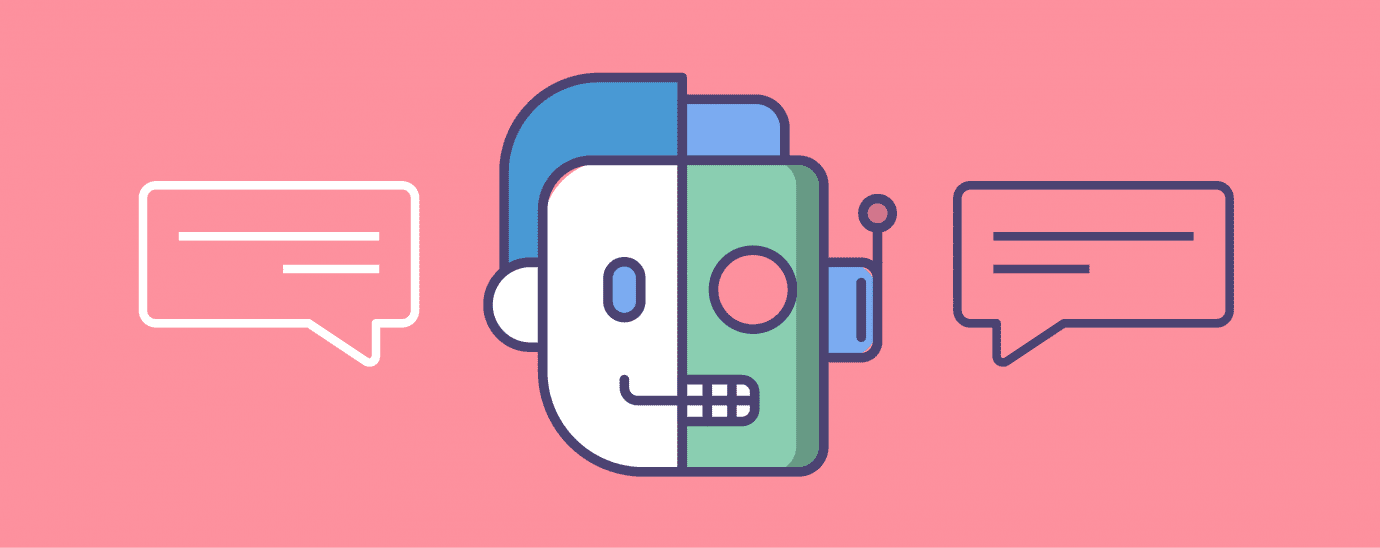Chatbots and AI: How do businesses use them effectively?

More and more businesses are relying on chatbots to offer a service. Are we losing the human touch, or will powerful AI mimic humans so well that we have no idea we’re talking to a bot?
The ultimate goal of any good chatbot is to be so believable that users will not even notice that they’re talking with a machine. After all, they are computer programs that are supposed to imitate human conversation. Think of it as a mini Turing test; a machine’s ability to display human behaviour so well that it fools people.
Many organisations today mainly use them in customer service or recruitment, as they can field a variety of questions using scripting and AI. Sometimes we are well aware that we’re talking to a chatbot, but sometimes we might be surprised to learn otherwise.
The best chatbots, used by companies across all sectors, aim to replace human workers with computers in order to cut costs and improve services. Chatbots can deal with multiple users at any given time, as opposed to a human who can normally focus on just one person. Their scripts are built-in, allowing for queries to be resolved immediately.

How do chatbots work?
Using artificial intelligence like deep learning, machine learning and natural language processing (NLP), chatbots are able to effectively learn from previous conversations, allowing them to develop significantly in order to provide a better service.
One of the best examples of a chatbot is Watson. Developed by AI and computing leaders IBM, Watson is one of the most advanced AI chatbots on the market.
Watson comes pre-trained with all the knowledge it requires of a particular industry and can search for answers in a data-set or knowledge base without direction. Perhaps more interestingly, Watson can also suggest how you could train it for even greater efficiency and clarity.
It can be applied to a website, Facebook messenger or mobile apps, meaning that an organisation’s multi-channel communication network is consistent and working in perfect harmony.
Practical use cases for chatbots

To coincide with their AI: More Than Human exhibition, the Barbican has employed a chatbot to speak with users about artificial intelligence. It uses Facebook messenger to converse, and goes through a series of questions and answers about use cases for AI, giving examples.
One particular exchange detailed AI-generated music.
“You humans seem to find it very difficult to conceptualise technology mastering creativity, but I bet I can change your mind,” it began. “A few recent AI use cases might make you think twice.” The chatbot then asks the user if they are interested in learning more.
“Let’s start with music.” the chatbot continued, before telling of an artificial intelligence named Coconet, which trained itself on all of the composer J. S. Bach’s chorales.
The machine then tries to trick the user, asking if they can spot the difference between man and machine, giving examples. If the user correctly identifies the machine-made chorale, it congratulates them.
This particular chatbot was primarily designed to advertise an event, stoking the fires of intrigue within users who get a first-hand experience with artificial intelligence. Others are simply there to serve, gathering data or communicating information. But what if a chatbot can be truly personalised and interactive?
Adam Chambers developed a recruitment chatbot to screen candidates for a language school. However, he sees a use beyond customer service and recruitment, one that uses deep learning to entertain.
“Imagine talking to a storybook which programs a person as the protagonist,” he said. The chatbot “intelligently moulds the narrative around [their] experiences,” learning from their life and their choices while engaged in the narrative to offer a new experience each time. Users can make decisions and the narrative adapts to them.
Chambers said he first came across bots in China while visiting heritage sites. Upon returning to the UK he developed Teachie and approached businesses, offering a way for them to rely less on their staff.

Teachie allows recruiters to advertise to niche audiences and intelligently screens candidates before passing them on to their human colleagues. However, he stresses that the mere collection of data is insufficient on its own.
“It’s about making bots user-centric,” he said. Rather than just a machine to collect data, Teachie wants to revolutionise the way in which their users interact with information.
The ethics of using chatbots
Using a chatbot, especially one that is hard to tell apart from a human agent, can raise certain ethical dilemmas.
In a time where data is collected and stored en masse, some users may find the digital age cold and uninviting, lacking personality and the human touch we are so used to with customer service.
It raises the question, is it ethically sound to employ machines which attempt to dupe users, or should we be more open about our use of chatbots? Some are transparent and unashamedly machines, others less so.
Honesty is important in business, even more so when a chatbot is dealing with a user’s personal information. Having said that, we input our sensitive data into forms on websites and apps all the time, is it really any different than feeding it to something that comes across as human?
